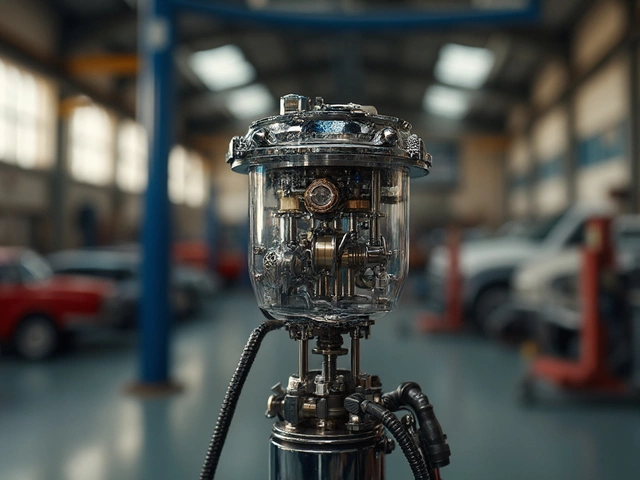Picture this: it’s a freezing morning, you’re already late, and your car’s engine just groans at you. Or maybe your once-trusty ride now takes a few tries before roaring to life—and you’re left wondering what went wrong. That frustrating delay, the weird hiccups, the subtle but stubborn struggle to start, these aren’t just random bad luck. There’s one sneaky culprit people overlook all the time: spark plugs. Everyone talks about oil changes or batteries, but those tiny plugs hiding in your cylinder head? They might be silently begging for retirement.
How Spark Plugs Affect Engine Starting
Spark plugs create the tiny explosions that bring your engine to life. When you turn the key, fuel and air mix in the cylinders, and it’s the spark plug’s job to ignite that mixture—right on cue. If even a single plug isn’t firing right, starting your car becomes a guessing game. You might get rough starts, cranking that takes too long, sputtering, or even the dreaded no-start. Industry tests by NGK and Denso (two of the biggest names in plugs) show that just one foul or worn-out plug can increase starting time by seconds. That doesn’t sound like much, but it feels like an eternity when you’re already running late or stuck in the cold.
Spark plugs are made to survive harsh conditions: heat, pressure, carbon gunk, and even droplets of oil. Over time, the electrodes—the metal tips that actually make the spark—wear down and the gap grows wider. Imagine a worn spark plug like a pair of old shoes after years of running marathons: it’ll still do something, but nowhere near as well—and sometimes not at all.
Bigger gaps need more voltage to jump across, so the ignition system has to work harder. Eventually, it just can’t keep up, and you get weak sparks or misfires. Ever noticed your car running rougher, or the check engine light flickering to life when you start it? Often, that’s your plugs waving the white flag. According to a 2023 study by CarMD, faulty ignition components, especially spark plugs, remain a top cause of failed starts and rough idling in cars over eight years old.
Another wild fact: spark plugs in newer cars can last 60,000-100,000 miles, but most stop performing at their peak long before hitting those milestones. Because they degrade bit by bit, you might not even notice the tiny drop in starting quality until you suddenly have real problems. So, yes—worn plugs make engines harder to start. The real shocker is how quickly your engine perks up after a fresh set.

What Actually Happens When You Install New Spark Plugs
Pop in new plugs and everything about your starting routine changes. Modern spark plugs don’t just deliver a better spark—they do it faster and cleaner, thanks to improved technology. Iridium and platinum plugs, for example, have super-thin tips that need way less voltage and last much longer than old copper plugs. Bosch, for instance, claims that swapping to their top-tier iridium plugs offers “quicker engine starting and improved fuel economy" almost immediately. That’s not just marketing fluff—real drivers report quicker starts after a new set.
Think of fresh spark plugs like a fresh pair of running shoes for your engine—they’re optimized, efficient, and give the starter and battery a break. The more reliable spark means every cylinder fires on the first try, so instead of cranking the engine for several seconds, you get quick ignition with less battery drain. That’s especially noticeable in cold weather, where weak or dirty plugs often lose their punch exactly when you need it most.
Let’s not ignore fuel economy. Tests by AAA in 2022 found an average 2-4% boost in fuel efficiency after replacing worn spark plugs in cars with over 80,000 miles. Small? Maybe. But over a year, that’s real cash for anyone driving daily. The newer plugs also help your engine idle smoother, even after it starts. If you’ve felt your steering wheel shuddering or noticed inconsistent revs right after turning the key, that’s often tied back to firing issues—and fresh plugs nearly always smooth that out.
Some folks wonder: do you really need the “premium” plugs recommended by the manufacturer, or will any spark plug do? Automakers design their engines around specific spark plug types. Switch them out for something cheaper, and you risk poor ignition, misfires, or worse. For best results, match the brand and type to your vehicle. If your engine’s been stalling, hesitating, or just refusing to start reliably, new spark plugs can feel like a miracle cure. But only if the old plugs are the real problem—more on that in the next section.

When New Spark Plugs Won’t Fix Starting Problems
Here’s the twist: not every hard-start case comes down to the plugs. Imagine replacing them, turning the key—and hearing that same sad groan. Frustrating, right? While worn plugs are a common cause, they’re not always the only reason a car’s hard to start. The starter, battery, fuel injectors, filters, ignition coils, sensors, the list goes on. New spark plugs might mask some symptoms but won’t cure deeper issues beneath the hood.
Let’s talk about batteries for a second. If your battery’s losing charge or struggling in cold weather, even the best spark plugs won’t help. Starter motors and charging systems are other weak links. A slow, grinding starter eats up whatever help new plugs provide. And when was the last time you checked your air or fuel filters? Dirty filters mean poor airflow or fuel starvation, which spark plugs alone can’t overcome.
There are also times when “new” plugs don’t perform. Wrong size, incorrect gap, or just cheap knockoffs from no-name brands—these can do more harm than good. Plugs out of spec can cause rough idling, hesitation, and persistent trouble codes. Always check your owner’s manual or trusted database before buying replacements. Get the gap right—modern engines are super picky, and even .01 inch off makes a difference.
So, what’s the smart play for anyone stuck with slow starts? Do a basic check before tossing money at new plugs. Most auto parts stores offer free diagnostic code readings now—use them. Look for error codes pointing to misfires (P0300-P0308 range), or ignition coil faults (common in Hondas and Fords). Pull an old spark plug and inspect it: black and sooty plugs point to a rich fuel mixture; oil-soaked means leaky valve seals; white and blistered could mean your engine’s running hot. Replace the plugs, but don’t stop investigating if new ones don’t do the trick.
If you swap your spark plugs and your car starts instantly, congratulations—it was likely the fix you needed. If not, consider deeper ignition or fuel issues before losing hope. Whatever the answer, regular plug checks every 30,000 to 60,000 miles are a cheap insurance policy against hard starts.
- Always use a torque wrench to avoid over-tightening or snapping plugs.
- Replace all plugs at once for balanced ignition—don’t swap just one unless it's new and the rest are fresh.
- Don’t forget to search for hidden coil or sensor issues if problems keep popping up.
- If you live where it gets below freezing, don’t wait for dramatic symptoms to appear—fresh plugs often prevent winter headaches.
Every engine tells a story, and the spark plugs are a big part of it. Listen to what yours are saying—sometimes, they’re just asking for a fresh start.






